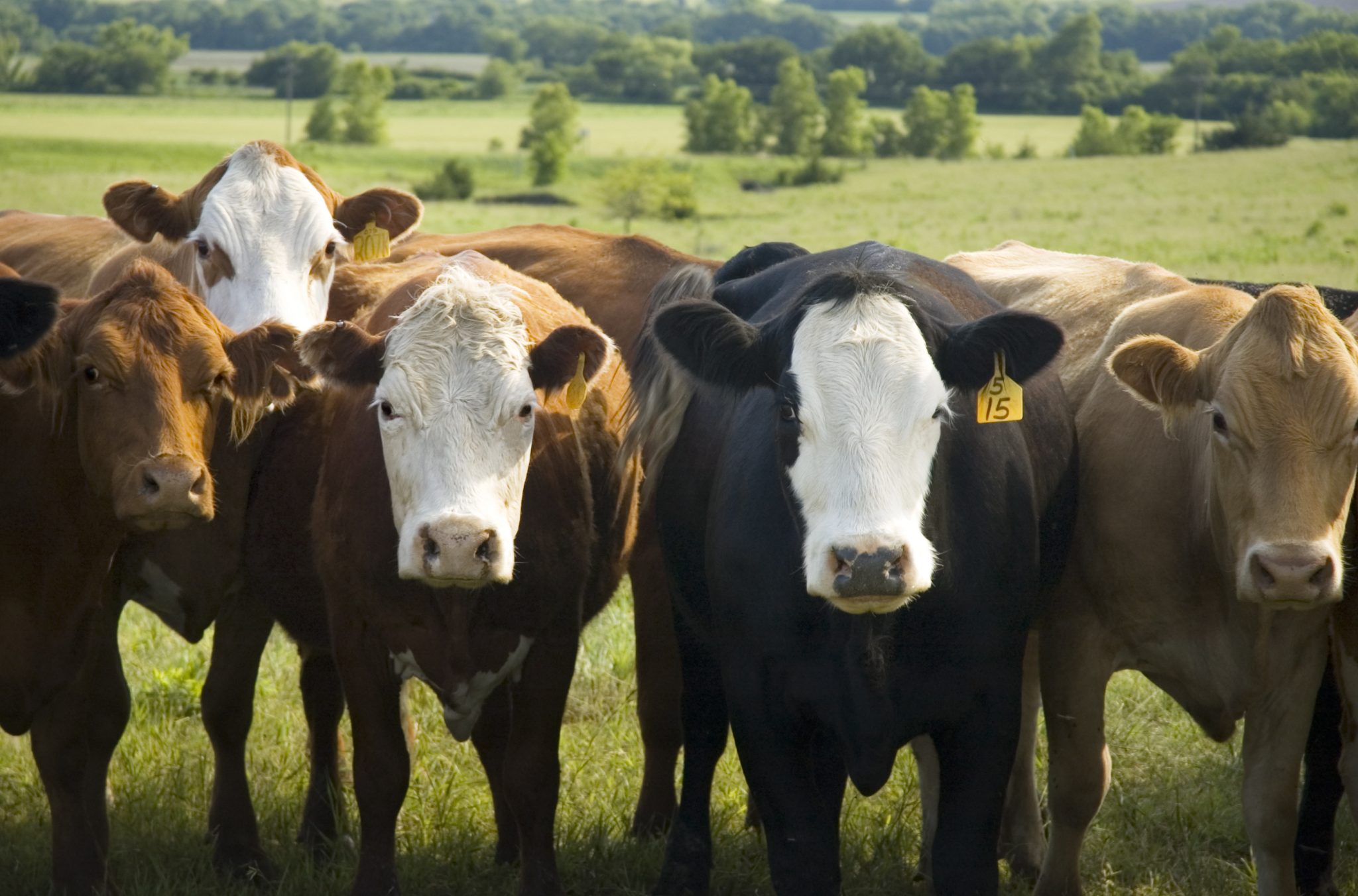Beef

Enzootic bovine leukosis, also known as bovine leukemia, lymphosarcoma, or malignant lymphoma, is a cancer of adult cattle caused by bovine leukemia virus (BLV). A different disease with a similar name, sporadic bovine leukosis, occurs in one of three forms: (1) the juvenile form in calves less than 6 months of age, (2) the thymic or adolescent form in cattle less than 2 years old, or (3) the cutaneous form in cattle 1 to 3 years old.
Sporadic bovine leukosis is not caused by BLV. Regardless of the cause, lymphosarcoma is a terminal cancer and also a major cause of carcass condemnation at slaughter. Because sporadic bovine leukosis occurs only rarely, this publication discusses BLV-caused enzootic bovine leucosis in adult cattle.
Clinical Signs
An important point to always keep in mind is that infection with BLV is not synonymous with clinical disease. Lymphosarcoma, the terminal stage of some BLV infections, occurs only in less than 2.5 percent of BLV-infected cattle, and infection with BLV typically occurs several years before the development of lymphosarcoma.
All organ systems may be involved in cases of adult lymphosarcoma resulting in highly variable clinical signs, but clinically affected cattle are usually 4 to 8 years old. The abomasum (true digestive stomach), heart, lymph nodes, spinal cord, eyes, and uterus are frequently affected. The location of the disease will dictate the specific clinical signs that occur, but animals with adult lymphosarcoma will often exhibit weight loss, enlarged lymph nodes, low milk production, diarrhea, bloat, respiratory distress, and stumbling or incoordination. While most cattle infected with BLV do not exhibit clinical signs, BLV infections are lifelong, so even animals without symptoms can serve as viral reservoirs and a source of exposure for uninfected animals.
Transmission
BLV is spread through close physical contact and exchange of contaminated biological materials. The virus is present primarily in white blood cells (immune cells) called lymphocytes that can be found in blood, milk, and tumors.
Common routes of transmission:
- Blood contaminated needles or equipment (dehorners, castration equipment, tattooing pliers, etc.)
- Biting insects
- In utero (4 to 8 percent of BLV cows give birth to calves infected with BLV)
- Possibly via colostrum or milk from an infected cow. However, infection by contaminated milk is thought to be rare, possibly due to the presence of maternal antibodies in the milk.
Treatment, Prevention, and Control
No treatment exists for lymphosarcoma in cattle, so preventing the introduction of BLV and good management to reduce the transmission of BLV in infected herds are keys to mitigating the effects of enzootic bovine leukosis. Early recognition of clinical disease is also important as the disease is progressive, and clinical signs will worsen with time and may lead to downer cows, systemic disease, or death. Appropriate testing for BLV, good herd management (including insect control), and strict hygiene are imperative when attempting to decrease prevalence in a herd.
Accurate blood tests are available and should be used in consultation with your veterinarian to provide accurate diagnosis and evaluation of herd infection status. To prevent the introduction or to minimize the spread of BLV, it is important to know the current BLV status of the herd to make appropriate management decisions as well as to monitor the effectiveness of prevention and control strategies.
The following general recommendations for preventing the introduction of and for reducing the transmission of BLV are just starting points for discussion and should be tailored for individual farms.
Preventing the introduction of BLV:
- Implement annual herd testing to investigate and document BLV status.
- Maintain a closed herd.
- Test all cattle entering the herd for BLV, isolate them for 30 to 60 days, and then repeat testing at the end of the isolation period before introducing them to the main herd.
Reducing the transmission of BLV in a BLV-infected herd:
- Use bloodless dehorning methods.
- Clean and disinfect instruments (dehorning and castration equipment, tattoo pliers, etc.) between uses.
- Reduce the number of biting insects.
- Do not feed colostrum or milk from BLV-positive cows or from cows of unknown BLV status to orphan calves.
- When processing cattle, perform veterinary and management procedures on BLV-positive cows last.
If you suspect a BLV problem in your herd or just want to check the BLV status of your herd, contact your veterinarian for further investigation.

